To provide a better shopping experience, our website uses cookies. Continuing use of the site implies consent. Learn More
FREE Ground Shipping on orders over $100
How to Measure a Zipper
There are two important measurements on every zipper – length (noted in inches or centimeters) and gauge, which is typically accompanied by a # next to it.
Both are equally important when it comes to determining the right zipper replacement.
This guide will show you how to measure both.
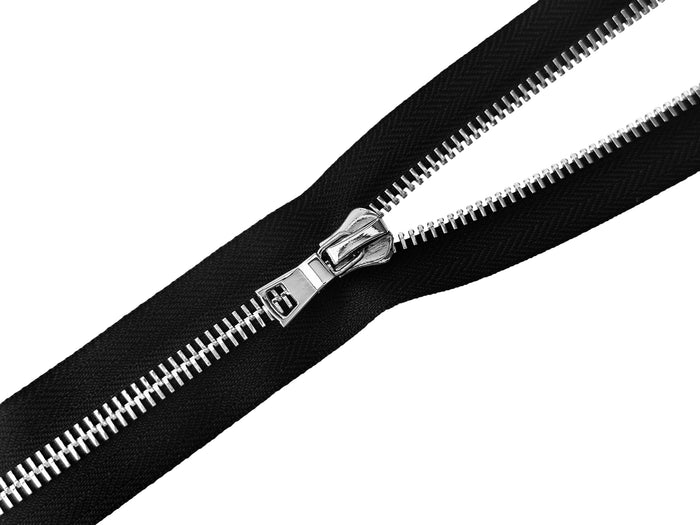
What is Zipper Gauge (aka Zipper Size)?
Also known as zipper size, the gauge of a zipper refers to the width of its teeth, in millimeters, when it’s zipped shut. Whenever you see a number and hash symbol (e.g., #2) next to a zipper, this is referring to the zipper’s gauge.
The larger the number, the heavier the gauge, and, therefore, the heavier the zipper.

How to Measure Zipper Gauge
Measuring zipper gauge is easy. Measure the zipper teeth, in mm, horizontally when the zipper is closed. Make sure you don’t include any tape in your measurement – it’s just the teeth you want to measure.
You can use a measuring tape, ruler, or digital caliper. If your measuring tool only includes cm and inches, convert them to mm to figure out the gauge (1cm = 10 mm; 0.25” = 6.35mm).
Some guides suggest looking at the back of the zipper's slider to determine the zipper gauge, but this isn’t the best solution. The letters and numbers on the back can mean a whole host of things, depending on the manufacturer.
The best - and most reliable - way to determine a zipper's gauge is to measure the zipper yourself.
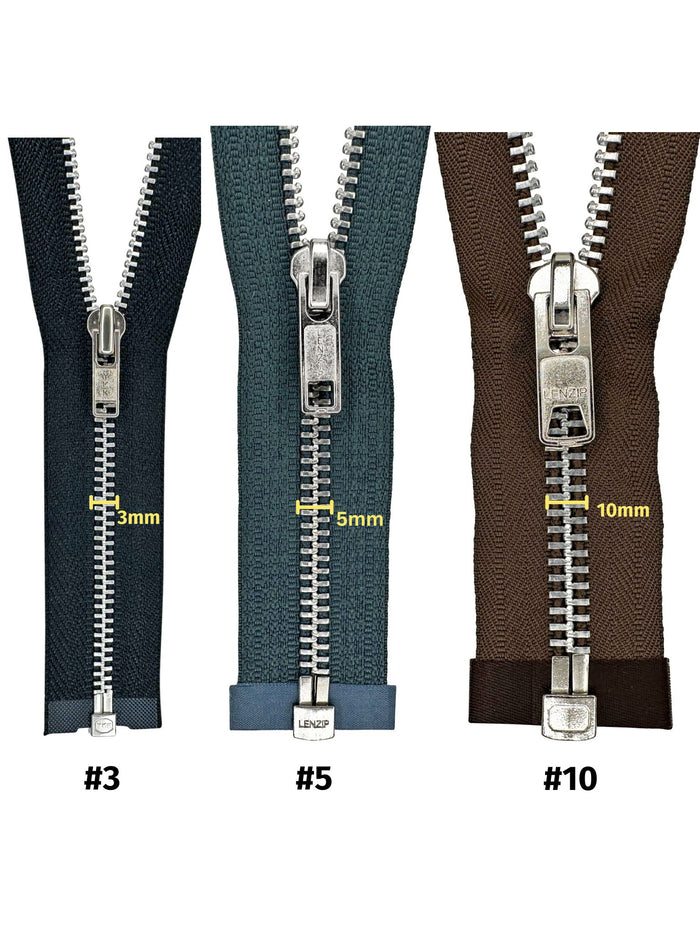
How to Measure Zipper Gauge if the Zipper Won't Close
If you’re working with a broken zipper that no longer
closes, you can work out its gauge by measuring one side and doubling it. You might have to round up or down slightly (to account for any overlap that occurs when the teeth are closed), but it should be fairly clear what the gauge is based on the measurement of a single side.
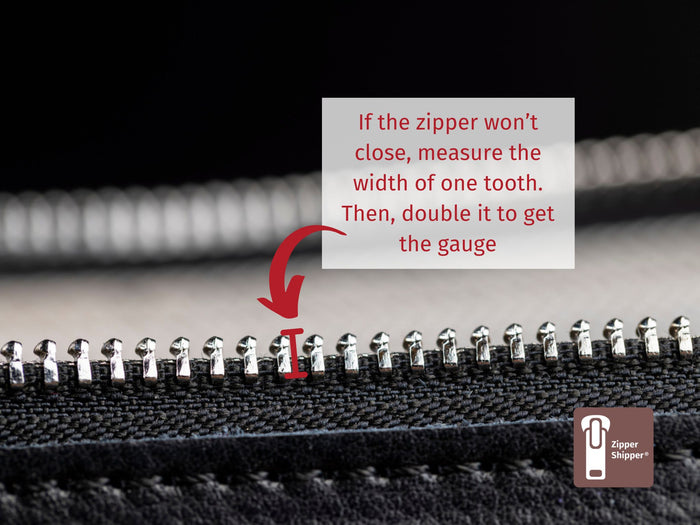
How to Measure Zipper Length
Generally, measuring the length of a zipper is easier than measuring the gauge of a zipper.
Zipper length is often measured in inches. The guidelines for measuring a zipper's length differ slightly based on type of zipper.
Regardless, you never include any zipper tape where there’s no chain in your measurement. To put it another way, zippers will always have some extra tape at the top and sometimes on the bottom, which is usually for cutting and sewing depending on the project. You don’t include this in your length measurement, as it’s essentially “waste” material in this regard.
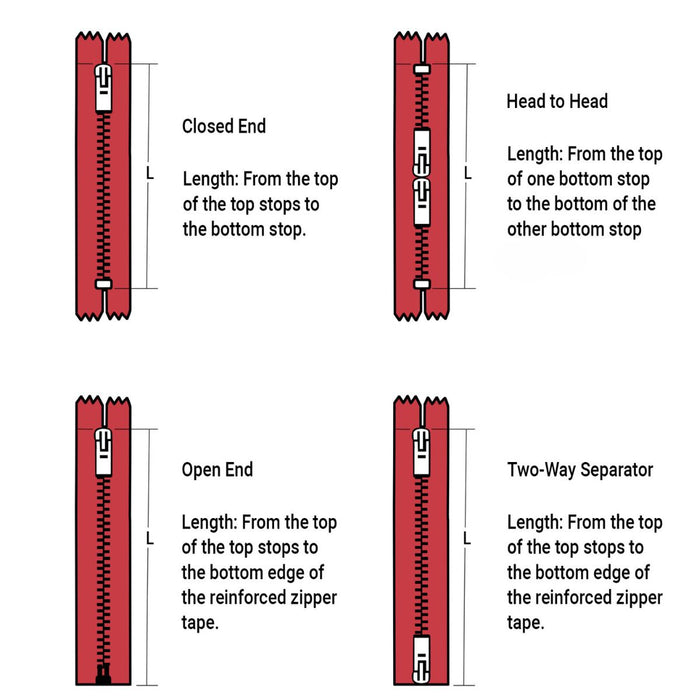
Measuring Closed-End Zipper Length
Closed-end zippers are pretty easy to measure because they have obvious ends.
Measure the length from the top of the top stop to the bottom of the bottom stop to get the required length.
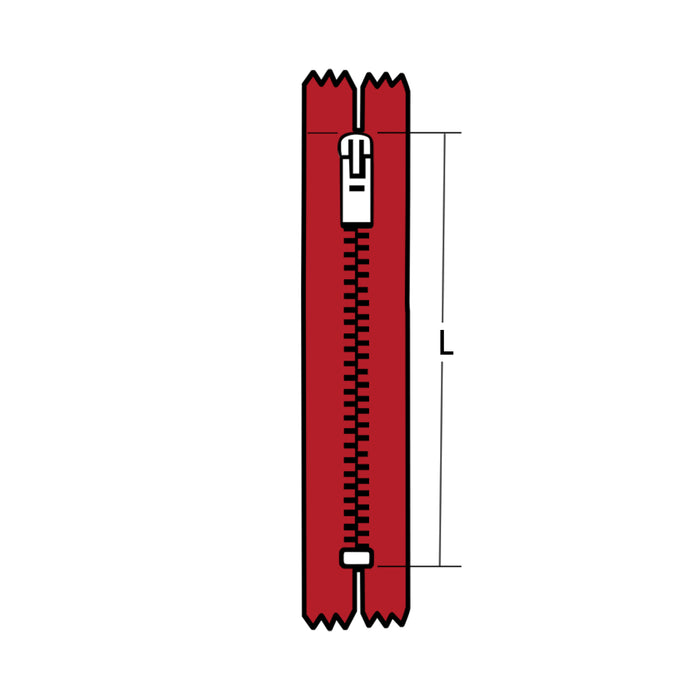
Measuring One-Way Separating Zipper Length
Also known as open-end zippers, these are just as simple to measure.
Go from the top of the top stop to the bottom of the retainer box, which is the part that keeps the zipper on its chain.
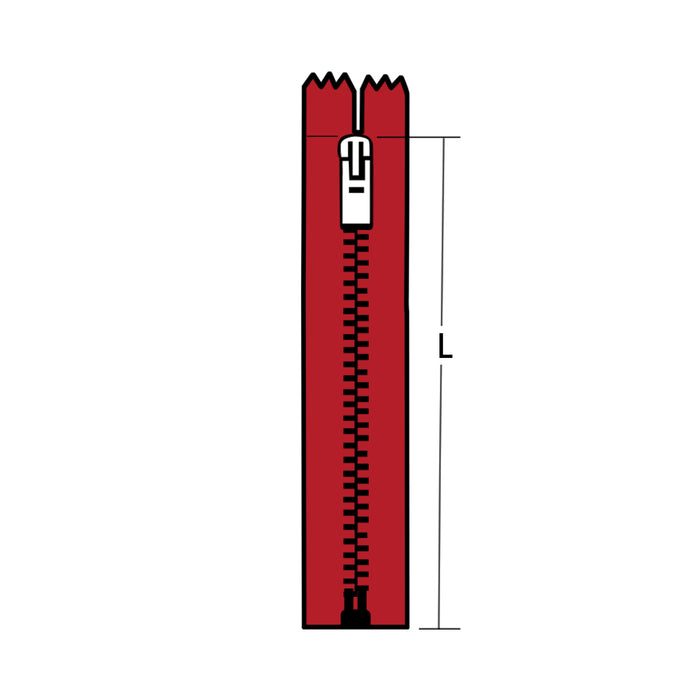
Measuring Two-Way Separating Zipper Length
Two-way separating zippers don’t have retainer boxes at the
bottom, as the second slider covers this purpose.
As such, you’ll want to measure from the top of the top stop to the bottom of the reinforcement tape.
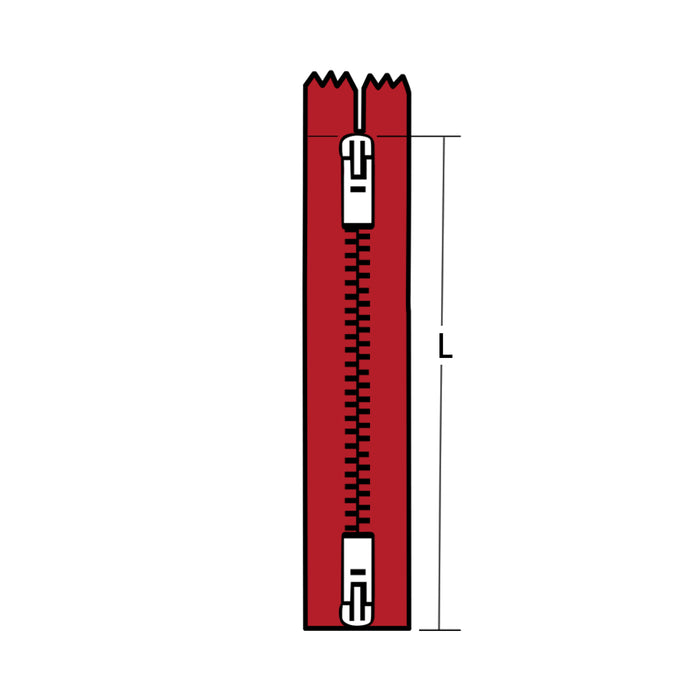
Measuring Head-to-Head (Two-Way Bag-Style) Closed-End Zipper Length
Two-way bag-style zippers are closed-ended, and similar to one-way closed-end zippers, they are measured from end to end from each stop.
Unlike one-way closed-end zippers, however, these zippers have a bottom stop at each end, as opposed to a bottom stop at one end and top stops at another.
Measure from the top of one bottom stop to the bottom of the other bottom stop.
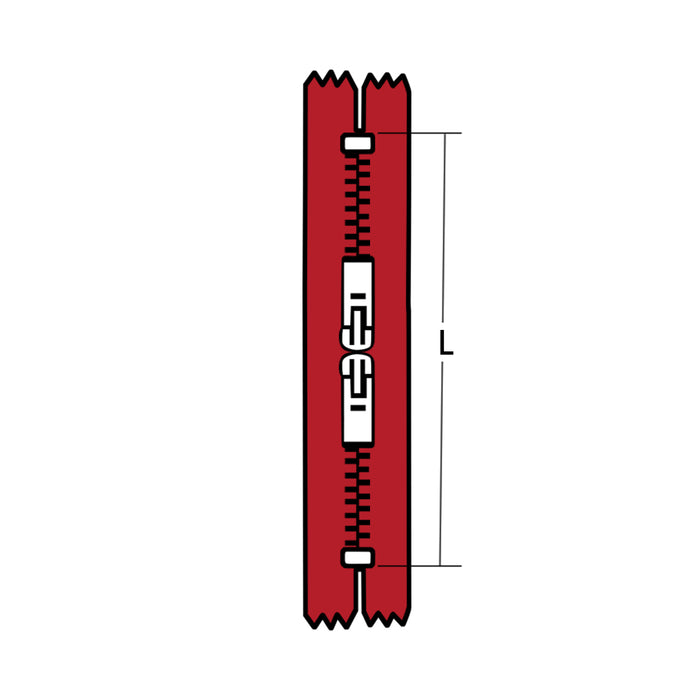
Ready to Shop?
Now that you know how to properly measure zipper gauge/size and zipper length, you can shop for what you need.
Our helpful shop filters will allow you to segment your searches by gauge and length.
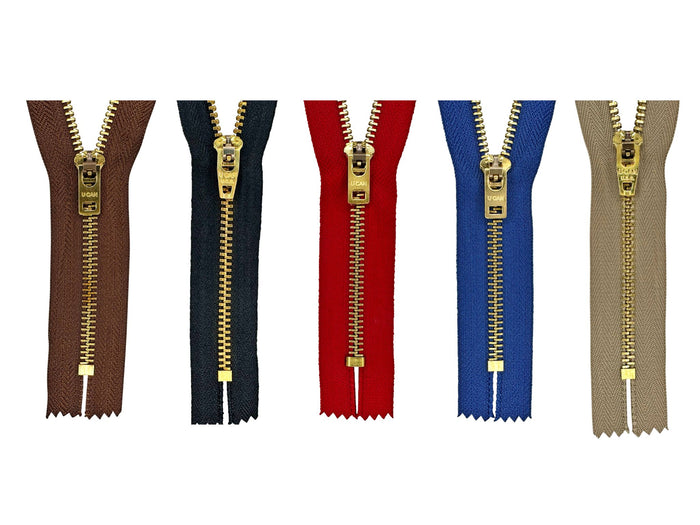
As Seen In:






Let customers speak for us
from 3554 reviewsJust what I needed and matched the large separating zipper

So glad I found you!!! I ordered several possibilities for my project and in there found the perfect one.I was replacing a zipper in a sweater and the reverse separating zipper was just perfect. Best choice for a hand knit sweater. Thanks, Thanks, Thanks and will use you for my go to source from now on!

Number 7 slider was what I needed. Works fine now. saved a $100 jacket

I am delighted to find this company, as the choice of zippers in fabric stores is often so limited. This is a hefty zipper which will replace a broken one on my husband's heavy duty coat. It shipped very quickly! I'll shop here again!

Exactly what was on the picture and great quality zippers

Perfect quality. I wish the shipping cost was less expensive.

Better quality metal jean zipper than I could buy locally. I will order from this store again

Tools needed: small screwdriver to remove stopper.
Needlenose pliers.
Cutters to remove some threads which were also acting as stoppers.
With that install was flawless and product seems great.

Great zipper, fast shipping, I would definately order from them again

Just finishing putting the last one in

I'm pleased with the quality of the zippers plus the vast selection offered. Also since I do alteration/repair work, I'm grateful that I received them within a week.
Thankyou 👍!

Fast shipping, have put it on the coat. Appears to work great, haven't needed the coat yet.

Thanks, I am putting them in duffel bags for my granddaughters. So far lm very appreciative.

so far great 3 zippers fixed easy,thanks more people need to know its not the zipper its the slider iv been fixing them for 30 years thanks for a great product sincerely dave

